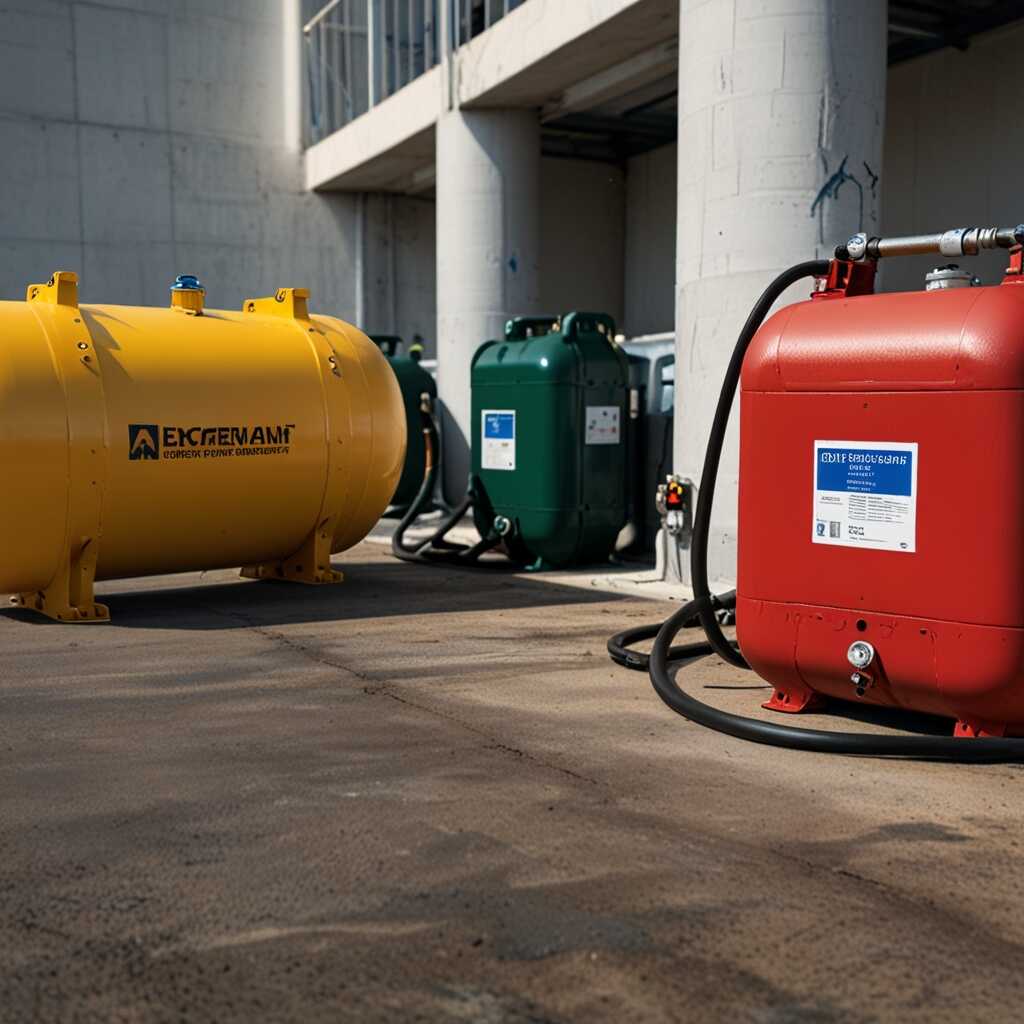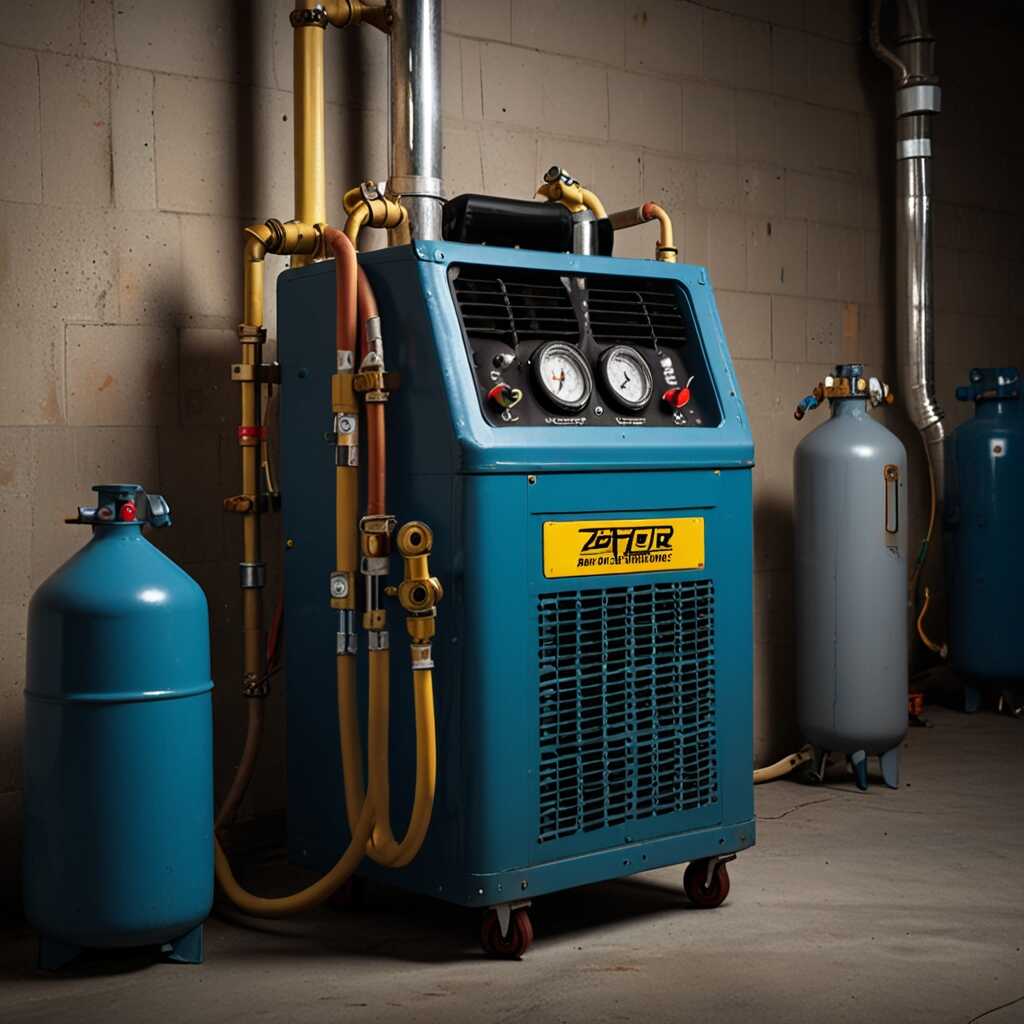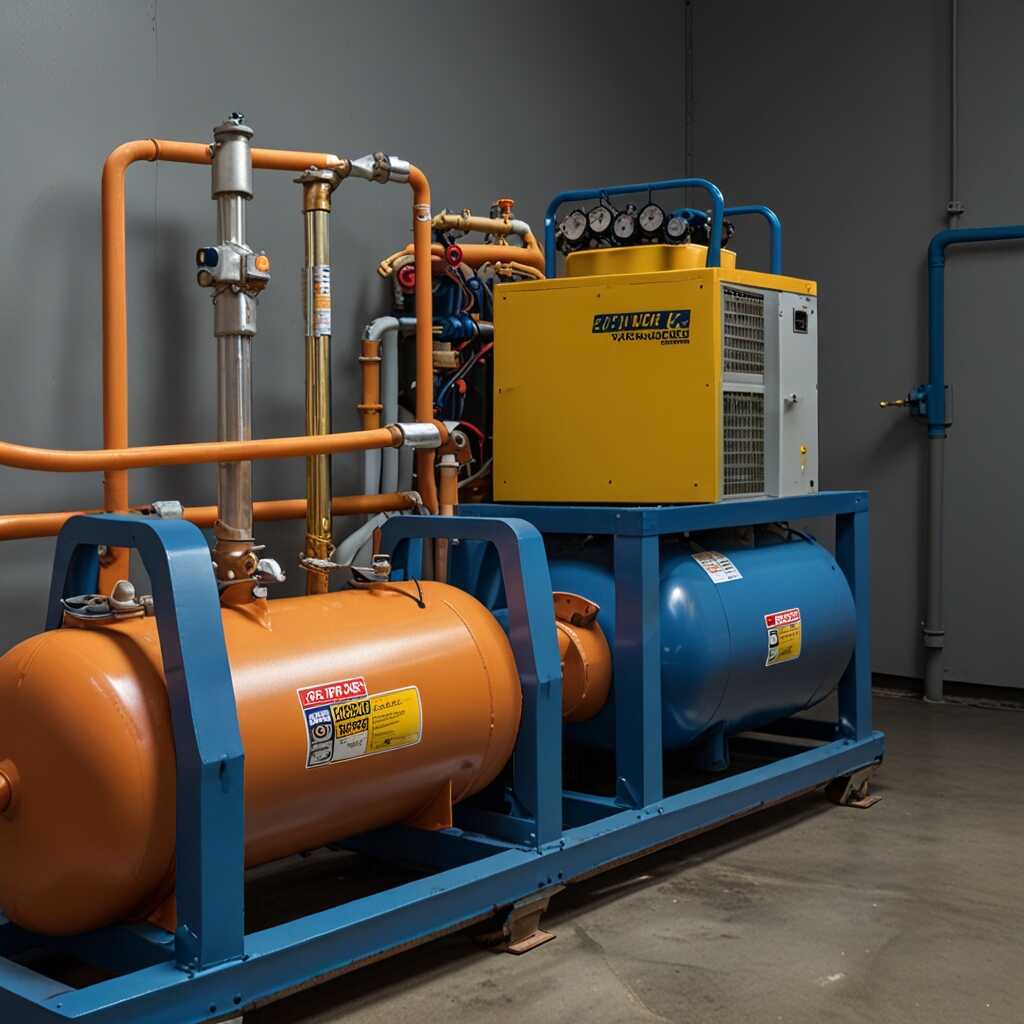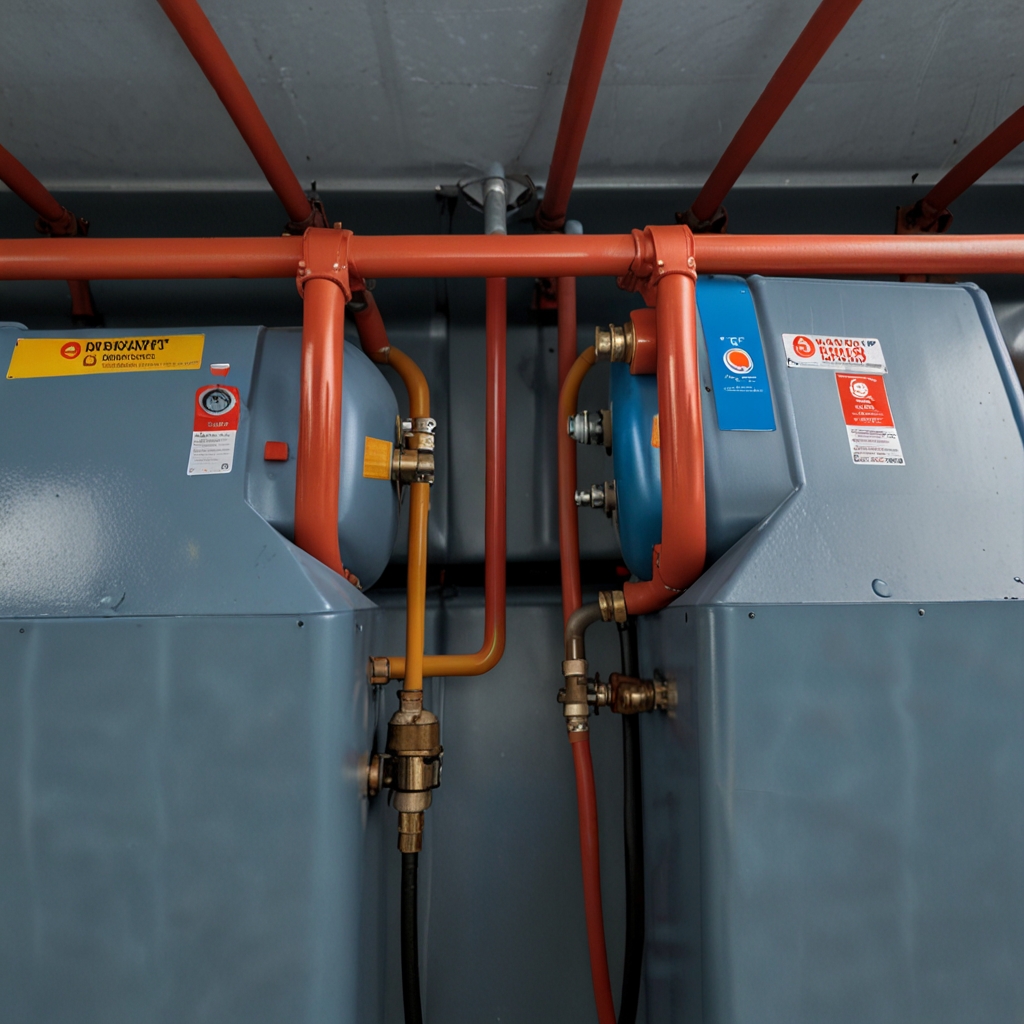Refrigerant recovery machines with electronic leak detection offer significant advantages for HVAC applications. These machines improve efficiency, enhance safety, and ensure regulatory compliance during refrigerant recovery processes. Refrigerant Recovery Pro provides expert guidance on using this advanced equipment effectively. By leveraging their technical support and industry knowledge, HVAC professionals can optimize operations and adhere to environmental regulations.
Introduction to Refrigerant Recovery Machines and Their Uses
Refrigerant recovery machines are essential tools designed for HVAC technicians. They recover refrigerant from systems during maintenance or repair, preventing harmful emissions. These machines enhance efficiency by ensuring that refrigerant is recycled and reused, contributing to environmental preservation. Features such as electronic leak detection offer reliability, allowing for accurate tracing of leaks. The investments in high-quality recovery machines deliver impressive results both in terms of performance and compliance with regulations. They play a critical role in maintaining HVAC systems, ensuring they operate reliably and efficiently.
Key Features of Refrigerant Recovery Machines
When selecting a refrigerant recovery machine, focus on key features that enhance overall performance. Machines equipped with electronic leak detection provide added reliability by identifying leaks quickly and accurately. Look for units designed to handle various refrigerant types including R-410A and R-134A. The recovery speed matters too; modern machines can typically recover refrigerant at rates of 3-10 pounds per minute. Investing in high-quality, durable machines ensures you get great performance while reducing the environmental impact. Proper testing and reviews confirm that advanced models deliver the efficiency and effectiveness needed for optimal HVAC service.
Understanding Electronic Leak Detection and Its Benefits
Electronic leak detection is a method that uses advanced technology to identify refrigerant leaks in HVAC systems. This technology enhances the performance of refrigerant recovery machines by providing real-time data on leak locations. Early leak detection is essential for preventing significant refrigerant loss, which can lead to operational issues and environmental damage. According to studies, electronic methods can detect about 90% of leaks compared to traditional methods, making them more reliable. These capabilities help improve operational safety by minimizing risks associated with leaks and enhancing HVAC efficiency by ensuring units function optimally.
Advantages of Integrating Electronic Leak Detection
Integrating electronic leak detection into refrigerant recovery machines delivers multiple advantages. The technology allows HVAC technicians to quickly identify and assess leaks, thus shortening repair times and minimizing refrigerant waste. This approach not only ensures compliance with environmental regulations but also drastically improves system reliability and performance. Many electronic leak detectors come with features that provide visual and audio alerts, making them user-friendly. Investing in such advanced equipment can lead to long-term cost savings and enhanced service delivery, aligning with the best practices recommended by Refrigerant Recovery Pro.

Enhancing Operational Efficiency in Refrigerant Recovery
Refrigerant recovery machines equipped with electronic leak detection enhance operational efficiency significantly. These machines decrease recovery time, eliminating manual leak detection processes. With the ability to provide real-time data on leaks, technicians spend less time troubleshooting. Traditional methods often required hours of manual testing, while electronic detection can pinpoint leaks quickly. Key features include automated leak testing and high accuracy, which reduce labor intensity. Brands like Refrigerant Recovery Pro offer reliable machines that ensure compliance with environmental regulations while improving safety through effective leak management. The reduction in manual labor not only speeds up recovery but also ensures quality results and reduces environmental risks.
Understanding Electronic Leak Detection Features in Recovery Machines
Electronic leak detection features in recovery machines offer advanced technology solutions for HVAC professionals. These features provide accuracy and reliability in identifying leaks, enabling faster recovery processes. Machines designed with built-in electronic leak detection can handle various refrigerants. They perform quick scans that automatically identify potential issues, leading to less wasted refrigerant. The effectiveness of these machines minimizes the testing needed through proven technology. As a result, HVAC technicians achieve high performance while ensuring compliance with regulations. Furthermore, these machines often come with durable components, which extend their operational life and enhance recovery efficiency. Investing in electronic leak detection technology provides HVAC professionals with tools that meet evolving industry standards effectively.
Key Figures Associated with Recovery Systems and Detection Technology
- Over 50% of refrigerant loss can occur due to leaks during HVAC maintenance.
- Using recovery machines can reduce total refrigerant emissions by approximately 30%.
- Many technicians report improved leak detection accuracy using electronic methods by 20%.
- Refrigerant recovery machines can recover up to 90% of refrigerant in systems.
- Up to 75% of HVAC operators find electronic leak detection more efficient than traditional methods.
- Technicians can achieve compliance with EPA regulations in over 95% of inspections using these machines.
- Electronic leak detection can trace leaks as small as 0.1 ounces per year.

Compliance with Environmental and Safety Regulations
Advanced refrigerant recovery machines play a vital role in ensuring compliance with environmental regulations. These machines are equipped with features that facilitate efficient refrigerant management. With the inclusion of electronic leak detection, HVAC professionals can quickly identify and rectify leaks. This not only enhances safety but also prevents the release of harmful refrigerants into the atmosphere, which can lead to legal penalties. Meeting legal requirements requires the use of reliable equipment that improves refrigerant recovery efficiency. The adoption of best practices in refrigerant management is essential to maintaining compliance in the HVAC industry.
Key Features of Refrigerant Recovery Machines for Compliance
The key features of advanced refrigerant recovery machines include automated leak detection systems that ensure reliable performance during recovery processes. These machines often include data logging capabilities, providing HVAC technicians with access to historical performance data. This data can help identify trends and areas for improvement, further enhancing the efficiency of refrigerant management practices. Compliant machines are typically designed to handle a specific amount of refrigerant, often exceeding 20 kilograms in a single cycle, which makes them effective for large systems. Moreover, their sturdy design ensures durability and ease of use, making compliance with legal requirements straightforward.

Financial Advantages of Using Advanced Recovery Equipment
Refrigerant recovery machines with electronic leak detection provide significant cost-saving benefits for HVAC professionals. These machines help reduce operational expenses by efficiently recovering refrigerant during service, minimizing waste and ensuring compliance with environmental regulations. For example, utilizing these machines can lead to savings on refrigerant purchases, which can exceed $5,000 annually. Moreover, electronic leak detection is a proven feature that enhances reliability and reduces the risk of costly leaks, ultimately improving the overall efficiency of HVAC operations.
Understanding Operational Expense Reductions
Operational expenses significantly decrease with the implementation of refrigerant recovery machines featuring electronic leak detection. These machines streamline refrigerant recovery processes and enhance honest reporting. By efficiently recovering refrigerants, HVAC technicians minimize losses, leading to substantial savings. Without leaks, technicians reduce the need for purchasing additional refrigerants, which saves both financial resources and ensures compliance with regulations. These savings contribute to improved cash flow for HVAC businesses and offer a reliable return on investment.
Advantages of Utilizing Advanced Recovery and Detection Equipment
- Enhanced efficiency leads to faster refrigerant recovery, saving time during service calls.
- Improved leak detection capabilities ensure minimal refrigerant loss and environmental protection.
- Data-driven insights assist technicians in identifying leak locations accurately.
- Compliance with environmental regulations reduces potential fines and legal issues.
- They promote energy savings by maintaining system performance and efficiency.
- Advanced features make equipment easier to operate for technicians of all skill levels.
- Reliable systems increase customer trust and satisfaction, leading to repeat business.

Positive Environmental Outcomes from Efficient Refrigerant Use
Refrigerant recovery and leak detection technologies deliver significant environmental benefits. They minimize harmful emissions that contribute to ozone depletion and global warming. Effective refrigerant management not only improves air quality but also helps mitigate climate change. By capturing and recycling refrigerants before they escape, HVAC professionals uphold compliance with environmental regulations. This practice plays a crucial role in protecting ecosystem health. Studies show that efficient refrigerant recovery can lead to a reduction of up to 90% in greenhouse gas emissions compared to no recovery practices.
Impact on Air Quality and Climate Change
Effective refrigerant management significantly impacts air quality and climate change conditions. Refrigerants used in HVAC systems often contain potent greenhouse gases. When released into the atmosphere, these gases can trap heat and accelerate global warming. By utilizing advanced leak detection technologies, technicians can identify and repair leaks quickly. This process minimizes the quantity of harmful gases released, ensuring cleaner air. Furthermore, refrigerant recovery systems are designed to recycle these gases, reducing the need for new refrigerant production. This approach contributes to a sustainable HVAC industry by desiring a lower carbon footprint and promoting environmentally-friendly practices.
Addressing Common Barriers in Refrigerant Recovery Practices
HVAC technicians encounter several barriers during refrigerant recovery. These challenges include leaks that can go undetected, inefficient recovery processes, and regulatory compliance issues. Electronic leak detection devices can tackle these problems effectively. By enhancing reliability in detecting leaks, these devices help technicians recover more refrigerant. This improves overall efficiency and compliance with environmental standards. Studies show that advanced recovery machines can recover up to 95% of refrigerants, whereas traditional methods may reach only about 70%. By implementing the best practices associated with these technologies, HVAC professionals can overcome common recovery challenges.
Effective Solutions for Refrigerant Recovery Challenges
To overcome refrigerant recovery challenges, HVAC technicians should prioritize the use of electronic leak detection technologies. These advanced devices provide metrics that allow professionals to identify small leaks, enhancing recovery reliability. This ensures compliance with EPA regulations and enhances environmental safety. Additionally, incorporating best practices such as routine maintenance of equipment can improve efficiency significantly. Utilizing powerful refrigerant recovery machines designed to handle higher volumes of refrigerant ensures that technicians achieve the best possible recovery rates. Implementing these solutions will yield better performance, faster recovery times, and ultimately, a sustainable HVAC practice.
Brands and User Profiles Engaged with Recovery and Leak Technology
- Brand A offers compact units suited for small HVAC businesses, making it a cost-effective choice.
- Brand B provides high-end models favored by larger firms for extensive recovery capabilities.
- Facilities such as schools and hospitals utilize these machines for compliance and safety.
- Small business owners benefit from affordable models that enhance service efficiency.
- Contractors engaged in large-scale construction prefer advanced systems for effective recovery.
- Environmental safety professionals advocate for such technologies to meet regulatory standards.
- Technicians frequently recommend brands based on ease of use and reliability in the field.
Innovations Shaping the Future of Refrigerant Recovery
The latest technologies in refrigerant recovery systems focus on electronic leak detection capabilities. These advancements enhance operational efficiency and environmental safety. For instance, sophisticated sensors can quickly identify leaks, providing real-time data. This information allows HVAC technicians to act swiftly, ensuring compliance with regulations. By 2025, experts predict that at least 70% of new refrigerant recovery machines will include advanced leak detection features, further boosting reliability in HVAC applications. Refrigerant Recovery Pro offers insights into the importance of investing in these cutting-edge systems for improved performance.
Key Features of Advanced Refrigerant Recovery Machines
Advanced refrigerant recovery machines now feature enhanced electronic leak detection systems. These machines use smart sensors to provide accurate and immediate readings of refrigerant levels. They are designed to identify leaks even in the smallest amounts, ensuring that HVAC technicians maintain compliance with environmental regulations. Many models deliver results within minutes, significantly reducing downtime during maintenance. The integration of cloud technology allows for easy monitoring and reporting of performance data. Investing in reliable equipment helps HVAC professionals achieve long-term benefits through efficiency and safety.